Overview of JPEG Systems

JPEG Systems (ISO/IEC 19566) is a suite of standards developed by the JPEG Committee (ISO/IEC JTC1 SC29/WG1) that extend JPEG coding standards with wider system aspects and extensions. It describes file formats, transport mechanism, adds metadata and additional functionalities that are necessary to support applications beyond purely coded image data. In addition it gives advice on how this additional information can be added across different JPEG standards.
The focus of JPEG Systems is two-fold: some Parts are foundational (Parts 1, 2, 5 and 9) and specify requirements for interoperability across the various JPEG formats, while other Parts (Parts 4, 6, 7, 8 and 10) focus on development of application-specific and format agnostic standards. The first group of Parts provide interoperability and consistency in file formats, image code stream syntax, and related imaging functionalities facilitating different implementations to co-exist. The second group of Parts are built on top of the foundational Parts and define metadata for application-oriented specifications that can be used with all JPEG formats.
JPEG Systems, like most other JPEG standards, is a multi-part specification. JPEG Systems currently includes the following Parts:
Part 1: Packaging of information using codestreams and file formatsJPEG Systems Part 1 is a technical report describing the packaging of information using codestreams and file formats in legacy formats and give guidelines for future standards. |
Part 2: Transport mechanisms and packagingJPEG Systems Part 2 is a technical report describing the transport mechanisms and packaging in legacy formats and give guidelines for future standards. |
Part 3: Feature list and boxtype IDJPEG Systems Part 3 was intended to list all features and boxtype IDs in JPEG standards. Due to frequent modifications this part was depricated. |
Part 4: Privacy and SecurityJPEG Systems Part 4 adds extensions to JPEG standards for privacy and security features. An example is the addition of encrypted supplementary images, which can replace scrambled image parts in the base image. It is based on the framework of JPEG Systems Part 5. |
Part 5: JPEG Universal Metadata Box Format (JUMBF)JPEG Systems Part 5 specifies a framework for JPEG standards to add universal metadata allowing future extensions using metadata, supplementary images, or other elements in addition to the base image. |
Part 6: JPEG 360JPEG Systems Part 6 defines a method to represent 360 degree images in JPEG standards and to add supplementary metadata and images. It is based on the framework of JPEG Systems Part 5. |
Part 7: JPEG Linked Media Format (JLINK)JPEG Systems Part 7, "JPEG linked media format" (JLINK), builds on the JUMBF capabilities to carry images-as-metadata and the ability to embed XML boxes so that sets of images and text can be experienced in a curated manner. With the capability of putting all the images and text within a single image file to make consumption simpler for consumers, and linking images and texts with described linkages, JLINK creates the electronic equivalent of the printed picture book. The storage of images, text, interactive regions, links between images, and transition effects are described by the JLINK standard. It is based on the framework of JPEG Systems Part 5. |
Part 8: JPEG SnackJPEG Systems Part 8, "JPEG Snack", defines metadata that enriches a representation of multiple media contents, in order to facilitate sharing, editing, and presentation. JPEG Snack is a means to convey relatively simple multimedia experiences which efficiently represents JPEG image-based content, allowing users to enjoy short-form content comfortably. It is based on the framework of JPEG Systems Part 5. |
Part 9: JPEG Extensions MechanismsJPEG Systems Part 9 is a technical report that collects guiding principles on how extension mechanisms work, both on the basis of the codestream and the file format, and lists specific implementations of these guiding principles in particular standards. The purpose is to provide documentation on these principles for the preparation of future extensions of these standards, and to ensure consistency of extension principles amongst standards. |
Part 10: JPEG Systems Reference SoftwareJPEG Systems Part 10 provides a set of JPEG Systems reference software implementations. This Part is currently under development. |
||

